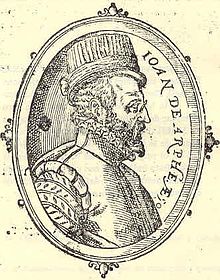José Velázquez de Medrano
[6] Don José Velázquez de Medrano completed his apprenticeship in the home of his father-in-law, who had practiced his craft in Castile and Aragon before settling in Navarre and opening a workshop in Pamplona, as stated in his own declaration from 1571.
[6] It's likely that the Guevara family facilitated José Velázquez de Medrano's introduction to the Aragonese episcopal circles during a period when the local silver workshops, prominent throughout the century, were in decline.
The regulations mandated that all master goldsmiths, including Velázquez de Medrano, had to pass an examination before being allowed to practice, a measure aimed at maintaining high craftsmanship standards.
Velázquez de Medrano’s involvement in shaping these regulations highlights his influence not only as an artisan but also as a leader in the goldsmithing community of Pamplona, ensuring the growth and sustainability of the trade well into the 17th century.
Jose's work has been described by historians as a synthesis between the classicist aesthetic driven by El Escorial, assimilated from the treatise by Juan de Arphe y Villafañe, and the practice more concerned with highlighting the plastic values of the architecture typical of Romanist altarpieces, which had a distinguished creative center in Navarre.
Solid proof of Medrano's proficiency in drawing is demonstrated by Bishop Antonio Zapata y Mendoza (1596–1600), who commissioned him to design the main altarpiece for the Pamplona Cathedral in 1597, contrary to the previously suggested year of 1598.
[2] While many of Medrano's creations are no longer extant, it is documented that he crafted the parish crosses for Santa María de Tafalla, Mendavia, Falces, Iroz, Lerruz, and Iragui, none of which have survived.
One such example is the Cross of Cirauqui, attributed to José Velázquez de Medrano and documented in Estella’s Monumental Catalog, dating to the late 16th or early 17th century, showcasing intricate ornamentation characteristic of Anchieta’s sculptural style.
[10] Additionally, the Cross of San Juan Bautista in Pamplona, crafted around 1600, exhibits a blend of architectural and decorative elements that align with Anchieta’s Romanist approach, incorporating detailed relief work and classical motifs.
[10] Some of Medrano's preserved works include the chrismatories of Arróniz, completed before 1610, and two of the four plain chalices he produced for Artajona around the same time, both bearing marks, in addition to the base and several enhancements to the monstrance of Santa María de Sangüesa in 1598, as well as the reliefs on the processional platform of the Pamplona Cathedral.



